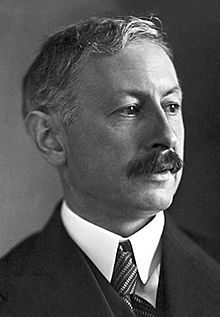Paul Karrer facts for kids
Quick facts for kids
Paul Karrer
|
|
|---|---|
 |
|
| Born | 21 April 1889 |
| Died | 18 June 1971 (aged 82) |
| Nationality | Swiss |
| Alma mater | Universität Zürich |
| Known for | Vitamins |
| Awards | Marcel Benoist Prize (1922) Nobel Prize for Chemistry (1937) |
| Scientific career | |
| Fields | Chemistry |
| Institutions | Universität Zürich |
Professor Paul Karrer (21 April 1889 – 18 June 1971) was a Swiss organic chemist. He is famous for his important research on vitamins. In 1937, he shared the Nobel Prize for Chemistry with Norman Haworth.
Contents
Biography
Early Life and Education
Paul Karrer was born in Moscow, Russia, on April 21, 1889. His parents, Paul Karrer and Julie Lerch, were both from Switzerland. In 1892, when Paul was three years old, his family moved back to Switzerland.
He went to school in Wildegg and Lenzburg. After finishing grammar school in 1908, he decided to study chemistry. He attended the University of Zurich, where he learned from a famous chemist named Alfred Werner.
In 1911, Paul Karrer earned his Ph.D. (Doctor of Philosophy) degree. He then worked for another year at the Chemical Institute. After that, he became a chemist with Paul Ehrlich in Frankfurt, Germany. In 1919, he returned to the University of Zurich. There, he became a Professor of Chemistry and the Director of the Chemical Institute.
Discovering Vitamins
Karrer's early work involved studying complex metal compounds. However, his most important research focused on plant pigments. These are the natural colors found in plants. He was especially interested in the yellow carotenoids.
He worked hard to figure out the exact chemical structure of these pigments. His research showed that some of these substances change inside the body. They turn into vitamin A. This was a huge discovery!
Karrer was the first to correctly identify the structure of beta-carotene. This substance is the main source of vitamin A. It was the first time anyone had figured out the structure of a vitamin or a provitamin (a substance that the body can turn into a vitamin).
More Vitamin Research
Later, Karrer also confirmed the structure of ascorbic acid, which is also known as vitamin C. He continued his studies, looking into vitamin B2 and vitamin E. His work on flavins helped scientists understand more about these important compounds. He helped identify lactoflavin as part of what was first called vitamin B2.
Paul Karrer wrote many scientific papers about his discoveries. He also received many awards and honors. The most famous was the Nobel Prize in 1937. He also wrote a textbook called Lehrbuch der Organischen Chemie (Textbook of Organic Chemistry). This book was very popular. It was published in 13 editions and translated into seven languages.
Personal Life
Paul Karrer married Helena Froelich in 1914. They had three sons together, but sadly, one of them died when he was a baby. Paul Karrer passed away on June 18, 1971, in Zürich, Switzerland. He was 82 years old. His wife, Helena, died the following year in 1972.
Legacy
Paul Karrer Gold Medal
To honor Paul Karrer's amazing contributions to chemistry, the Paul Karrer Gold Medal and lecture were created in 1959. Several leading companies helped set up this award.
This prestigious medal is given out every year or every two years. It goes to an outstanding chemist who then gives a special lecture. This lecture takes place at the University of Zurich, where Karrer did much of his important work. The Paul Karrer Lecture Foundation is still based at the Chemistry Institute of the University of Zurich in Zürich.
See also
 In Spanish: Paul Karrer para niños
In Spanish: Paul Karrer para niños

